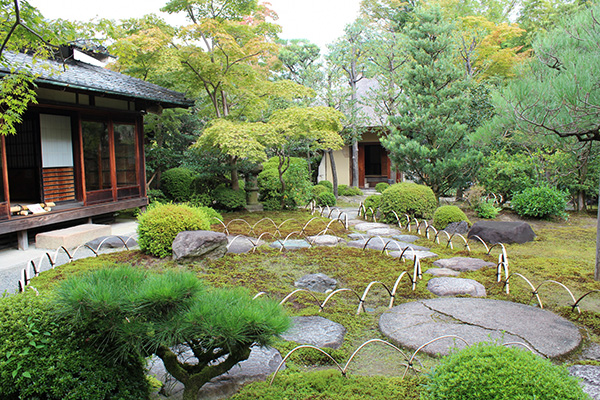Inner Garden and Shokado Shojo
 Inner Garden
Inner Garden
The inner area of the Shokado Garden contains the seventeenth-century thatched-roof
hermitage of the Buddhist monk Shokado Shojo, the guest hall of his retirement temple, and the
Higashi-Kurumazuka Kofun, a burial mound dating from the fourth or fifth century, all skillfully
integrated into the lush landscape. This part of the garden is a designated National Place of Scenic
Beauty.
Shokado Shojo (1584–1639) was a well-known tea master and artist, recognized as one
of the top three calligraphers of his time. Shokado was his art name, interpreted as “house of the
monk who loved pine flowers.” In ancient times, pine flowers were believed to only blossom once every
thousand years and were used as a poetic metaphor for rare and beautiful happenings.
Shojo arrived at Mt. Otokoyama as a teenager to enter monastic life and eventually
rose to the rank of chief abbot of Takimotobo, one of the numerous small temples that once comprised
the Iwashimizu Hachimangu shrine-temple complex. He was well-connected with artists, members of the
nobility, and the imperial family, hosting tea gatherings that brought together the cultural elite of
his time. In his mid-fifties Shojo retired and moved to the nearby Izumibo Temple, where he built a
small thatched-roof hermitage in 1637, naming it Shokado. The building served as both residence and
tea house, where Shojo continued to entertain, holding small tea gatherings and intellectual
discussions.
In the late nineteenth century, the hermitage and the guest hall from Izumibo were
removed from Mt. Otokoyama after the government-ordered separation of Shinto and Buddhism. They were
moved several times and eventually installed at their current location in the Shokado Garden. The
hermitage and its tea garden (roji), as well as their original location on Mt. Otokoyama, are
designated National Historic Sites.

